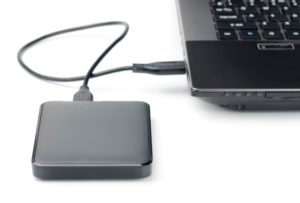If your business loses access to its data in the upcoming days, what would you do? How long do you think it will take you to recover from losing access to your data? For many businesses, losing access to data for one day can mean the entire business operations will be shut down until the issue is fixed.
With the start of January arriving, it is important that you take some time to review your current Backup and Disaster Recovery (BDR) plans before the next winter storm hits your area.
Your business can make it through terrible weather, disasters, power outages, and data loss if you are prepared. Many businesses make the decision to use a back-up solution. Unfortunately, many of those businesses are not able to recover in time when things go awry. This is why so many businesses have to close their business for good.
When you back up your data, you have only finished half the battle. It is also important that you need to be able to access all of your data in the case of an emergency. With the right services, you will be able to fully recover from disaster loss or data loss in a small amount of time. With the right services, your business will be up and running in no time.
When you have the proper BDR(Backup and Disaster Recovery) solution, your business can be operating again in a matter of minutes. When a business is down for even a short period of time, this can significantly hurt a company’s morale. Many businesses overlook the importance of getting their business running again after downtime. Many of the businesses do not pay attention to how long it takes for them to reboot their networks.
When your business finds the right BDR solution, you will not have to worry about several problems, including the following:
- You will not have to worry about losing access to data that has been accidentally deleted. You will be able to get this data back.
- You will not lose your data if your network or data has been hacked.
- If any of your equipment has been lost or damaged, you will be able to retrieve this data.
We all know how vulnerable data can be. Data can be compromised at any given moment. Data can be compromised in a cyber attack, data can be lost during a power outage or natural disaster, and data can be deleted accidentally. When you take advantage of a business continuity solution, you will be able to restore everything you have lost during any point in time.
You do not have to have any fear during emergency situations because your business will not have to stop. With a local device, you will be able to restore any lost files, any lost applications, and so much more in a matter of minutes. A cloud backup will offer you the level of security you need if your system is ever in jeopardy.
It does not matter if you ever experience a power outage, fire, flood, natural disaster, or emergency situation, your Backup and Disaster Recovery(BDR) solution can restore everything you have lost. Your employees will also be connected to your business operations, and this will allow your business to continue running even if the office has been totaled. It does not matter where you will be located in the world, you will have access to your files, folders, and other applications.
If you want to have a BDR solution what will put your mind at ease, contact us today and ask about our services.



